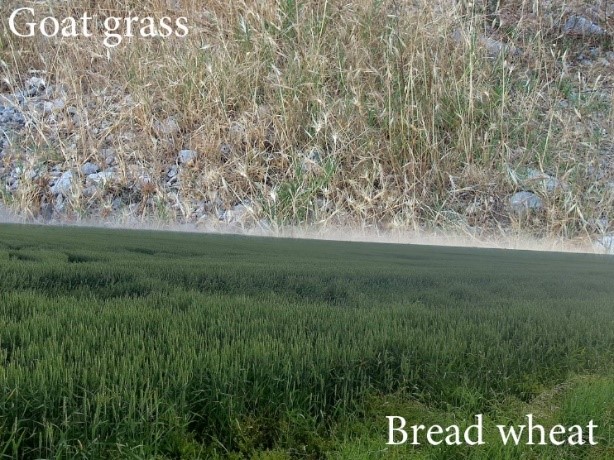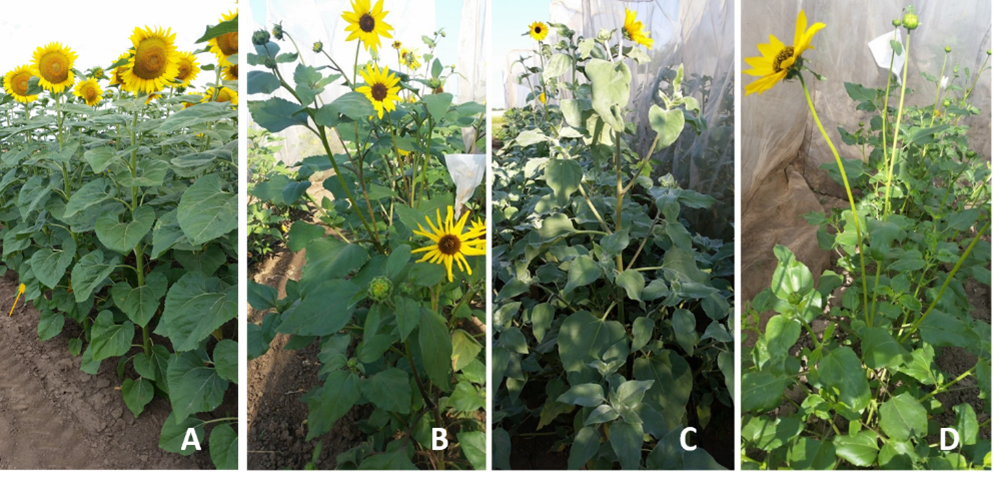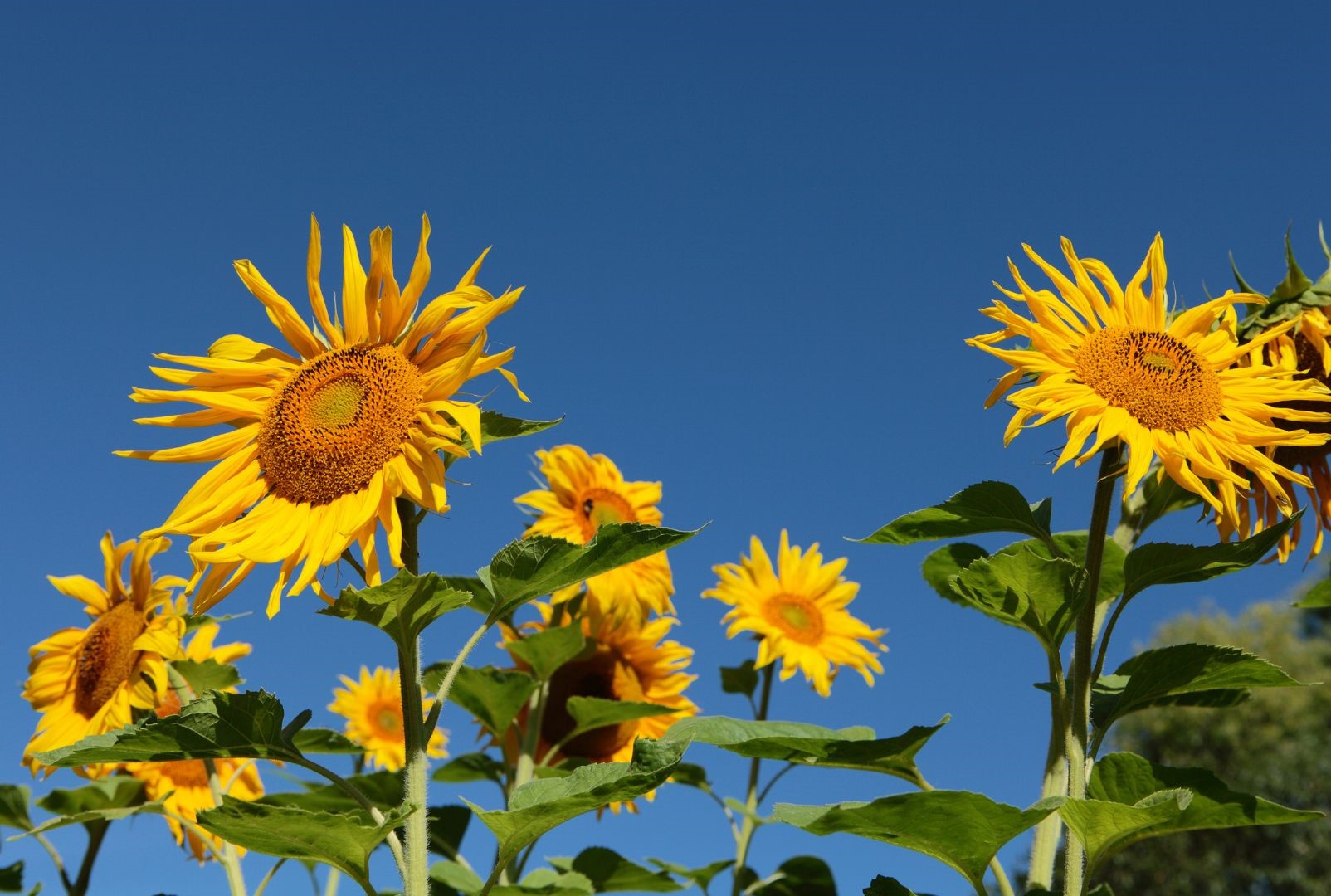The Importance of Crop Wild Relatives for Enhanced Plant Stress Resilience
The Importance of Crop Wild Relatives for Food Security and Sustainable Agriculture
The challenges arising from modern-intensive agriculture
It was a long journey, from taming and domesticating native plants to controlled breeding and creating modern high-yielding crops.
The 20th century was an era of outstanding achievements in many fields, especially in agrifood. The significant increase in crop yields brought by the Green Revolution was paid for by environmental deterioration, which paved the way for jeopardizing our existence on the face of the Earth with global warming and climatic changes. After more than 50 years of intensive agriculture, humanity is facing the other side of overall agricultural industrialization. Extensive irrigation, agrochemical use, and intensive tillage have led to massive arable land degradation and erosion. FAO reports that 10 to 12 million hectares of land, or about 14 million football fields, are degraded each year, and 24 billion tons of fertile soil each year is wasted due to erosion, primarily by unsustainable agricultural practices. Water pollution has been predominantly caused by intensive agriculture and large quantities of agrochemicals.
Moreover, agriculture is the largest global user of water, up to 70% of water usage; hence, polluted water from agriculture returns to it as an abiotic stress inducer. Agroindustry is causing an increment in carbon emissions, contributing to global warming and climate change, which leads to further environmental erosion, agrometeorological extremes, and irregularities. These represent the main source, jointly with soil low productivity, of abiotic stress in primary food production.
Besides abiotic stress, monoculture and genetic uniformity practiced for decades led to increasing biotic stress due to weeds, diseases, and pests. Furthermore, agriculture enormously contributed to the dramatic erosion of biodiversity. National Geographic reported in 1991 that 1959 in Sri Lanka, farmers grew about 2000 traditional rice varieties; that number was reduced to 10 principal varieties by the end of the 20th century. In the same period, in India, from the 30000 rice varieties, only 10 made it to the commercially cultivated fields and market. Though about 6000 plant species are grown for food worldwide, just 9 (sugarcane, corn, wheat, rice, potatoes, soybeans, oil palm fruit, sugar beet, and cassava) make up 66% of crop production. Hence, wild relatives are called to the rescue in times of emergency and need. The abundant richness of long-neglected natural populations of crop wild relatives offers genetic diversity good enough to fight modern stresses in primary food production, drought, salinity, heat, diseases, and pests.
The value and role of crop wild relatives for food security
Goat grass (Aegilops sp.): The wild relative of wheat
The ability to resist and withstand stressful conditions is preserved in wild relatives better than in their domesticated relatives, who enjoy being nursed by humans during life cycles. Goat grass (Aegilops sp.) played a crucial role in wheat evolution, shaping it into a bread form and broadening its adaptive ability, making bread wheat the staple food for 4.5 billion people.
Aegilops species have been a valuable source of stress-resistance genes for broadening genetic variability in wheat breeding programs. Numerous genes for abiotic stress resistance, like drought, salinity, and heat, as well as biotic stress, like rusts and insects, were mined from this close relative of wheat. 
Goat grass, a wild weedy relative, is the principal progenitor of bread wheat and a source of useful genes for broadening wheat variability, particularly for stress resilience.
The “Father of wheat cytogenetics,” Ernest Robert Sears (1910-1991) from the USDA University of Missouri 1956, transferred the resistance to leaf and stem rust from Aegilops umbellulata and Sir Ralph Riley (1924-1999) in 1968 introduced the resistance gene from Aegilops comosa to bread wheat. Sears’s variety “Transfer” was the first cultivated wheat source of leaf and stem rust resistance widely used in wheat breeding programs as a donor of that desirable variability. Riley’s variety “Compare” had been of similar use. Sears and Riley, as founders of chromosome engineering in plant breeding, traced a pathway of fighting rusts that can reduce yield from 50 up to 100%, by utilizing wild wheat relatives.
Today, Aegilops sp., as well as wild relatives from Triticum sp., are widely used as a source of anti-stress genes for broadening bread wheat (Triticum aestivum) variability. Wild einkorn (Triticum urartu) and emmer wheat (Triticum dicoccoides) are donors of drought resistance genes that could be useful in breeding programs, while resistance genes for soil salinization could be found in wild wheatgrass (Lophopyrum elongatum), Bessarabian Wheatgrass (Thinopyrum bessarabicum), and different Aegilops species.
Wild, red, or brown beard rice (O. rufipogon): The wild relative of rice
Rice (Oryza sativa), another staple crop, represents the predominant energy source for about half of the human population, especially in Asia and Africa. Cultivated rice relies on genetic resources comprised of 24 wild species considered its wild relatives. O. rufipogon (wild, red, or brownbeard rice), a perennial rice species originating in East and South-Easter Asia, is considered a wild progenitor of cultivated rice.
It is well adapted to flood-prone habitats, high salinity brackish marshes, drought, exhibiting tolerance to aluminum and soil acidity, as well as, bacterial blight disease, blast, the brown planthopper, tungro virus, sheath blight. Another supposed cultivated rice ancestor and a source of valuable genetic variability is Oryza nivara. This South and South Asian wild annual species harbors enhanced grassy stunt virus and blight resistance. In West Africa, wild rice O. barthii, commonly called African wild rice, had been domesticated to Oryza glaberrima (African rice). Both wild and domesticated African rice forms possess several useful anti-stress genes, namely tolerance to heat and drought, iron toxicity, phosphorus deficiency, resistance to diseases, nematodes, and weed competitiveness.
Balsas teosinte (Zea mays ssp. parviglumis): The wild relative of maize
Maize (Zea mays) is a staple crop originating from Central and Southern Mexico, a descendant of the annual wild grass Balsas teosinte (Zea mays ssp. parviglumis). Another donor of important genes for shaping corn into its present form has been closely related to the wild perennial grass genus Tripsacum dactyloides (Eastern gamagrass, bull grass, or Fakahatchee grass).
Both wild ancestors harbor useful gene funds (pools), mainly related to stress tolerance. Balsas teosinte can endure water scarcity for prolonged periods, resulting in drought tolerance genes. This teosinte species has higher soil salinity and aluminum tolerance and resistance to various fungal, viral, and bacterial pathogens, insects, and other herbivores. Eastern gamagrass, being of wider adaptive plasticity, is the useful donor of genes for withstanding both abiotic and biotic stresses, like waterlogging, drought, frost, acid soil, higher aluminum and salinity content in the soil, as well as resistance to Western corn rootworm, Northern corn leaf blight, and rust. Mexican teosinte (Zea mays ssp. mexicana) exhibits tolerance to acidic soil through aluminum tolerance, as well as resistance to pests and diseases (Corn borer, leaf blights).
Common sunflower (H. annuus): The wild progenitor of sunflower
Another real American native crop that could not be considered a staple but is nevertheless of growing importance in agricultural production is the sunflower (Helianthus annuus). The wild progenitor of the modern sunflower is the common sunflower (H. annuus), a native annual herb of American and Canadian Great Planes. Helianthus is a large genus of more than 50 species distributed in almost all continents. The richness of wild relatives has been the source of useful anti-stress genes for cultivated sunflowers. For example, more than 30 genes for broadening genetic variability for the resistance to downy mildew, a major disease of sunflowers, have been found in H. argophyllus, H. tuberosus, H. praecox ssp. runyonii, wild H. annuus, etc.
In 1980, in the Banat region of former Yugoslavia and Romania, Phomopsis stem canker appeared for the first time and quickly spread worldwide decreasing sunflower yield. The first resistant hybrids were obtained in Yugoslavia in 1986 by Škorić and the team of the Novi Sad’s Institute of Field and Vegetable Crops. The parental inbred lines of these hybrids possessed introgressions from H. tuberosus, and H. argophyllus. Subsequently, resistance genes have been found in other wild relatives. Since Helianthus sp. is a genus with a wide environmental range, desert-inhabiting wild relatives that are well adapted to water deficiency, such as Helianthus niveus ssp. tephrodes from the Sonora desert could come in very handy in broadening genetic variability in drought breeding programs. Moreover, Helianthus anomalus, H. argophyllus, H. nuttallii, H. petiolaris could be very resourceful wild relatives in that respect, as well. 
Cultivated sunflower (A) and its wild relatives H. annuus (B), H. argophyllus (C), H. petiolaris (D) (photos provided courteously by Dr. Jelena Jocković from the Institute of Field and Vegetable Crops, Novi Sad, Serbia).
Conclusion
Examples of these important four crops presented above illustrate the utilization of wild relatives in cultivated crop improvement, singled out because of their essentiality in the human diet, such as wheat and rice, and of rapidly growing importance as broad utility value commodities like maize and sunflower. However, the quest for genetic resources in the existing biodiversity has been an ongoing task in plant breeding programs of all cultivated crops, particularly edible species to feed the growing human population. Fighting stressors to secure reliable and constant food flow is an important part of that quest.
References:
Altman, A., Fan, L., Foyer, C., Cowling, W., Mittler, R., Qaim, M., Weber, A.P., Reynolds, M., Varshney, R.K. and Fernie, A., 2021. Past and future milestones of plant breeding. Trends Plant Sci, 26(6), pp.530-8.
Bansal, M., Kaur, S., Dhaliwal, H.S., Bains, N.S., Bariana, H.S., Chhuneja, P. and Bansal, U.K., 2017. Mapping of Aegilops umbellulata‐derived leaf rust and stripe rust resistance loci in wheat. Plant Pathology, 66(1), pp.38-44.
Bierschenk, B., Tagele, M.T., Ali, B., Ashrafuzzaman, M.D., Wu, L.B., Becker, M. and Frei, M., 2020. Evaluation of rice wild relatives as a source of traits for adaptation to iron toxicity and enhanced grain quality. PloS one, 15(1), p.e0223086.
Chen, C., He, W., Nassirou, T.Y., Nsabiyumva, A., Dong, X., Adedze, Y.M.N. and Jin, D., 2017. Molecular characterization and genetic diversity of different genotypes of Oryza sativa and Oryza glaberrima. Electronic Journal of Biotechnology, 30, pp.48-57.
Colmer, T.D., Flowers, T.J. and Munns, R., 2006. Use of wild relatives to improve salt tolerance in wheat. Journal of experimental botany, 57(5), pp.1059-1078.
Dimitrijević, M., Petrović, S., Banjac, B., Barać, G. and Mladenov, V., 2018. Agrobiodiversity Genetic Variability Utilization in Organic Food Production. Contemporary Agriculture, 67(1), pp.1-8.
Jocić, S., Cvejić, S., Hladni, N., Miladinović, D. and Miklič, V., 2010. Development of sunflower genotypes resistant to downy mildew. Helia, 33(53), pp.173-180.
Kou, H., Zhang, Z., Yang, Y., Wei, C., Xu, L. and Zhang, G., 2023. Advances in the Mining of Disease Resistance Genes from Aegilops tauschii and the Utilization in Wheat. Plants, 12(4), p.880.
Pinstrup‐Andersen, P. and Hazell, P.B., 1985. The impact of the Green Revolution and prospects for the future. Food Reviews International, 1(1), pp.1-25.
Radanović, A., Miladinović, D., Cvejić, S., Jocković, M. and Jocić, S., 2018. Sunflower genetics from ancestors to modern hybrids—A review. Genes, 9(11), p.528.
Seiler, G.J., Qi, L.L. and Marek, L.F., 2017. Utilization of sunflower crop wild relatives for cultivated sunflower improvement. Crop science, 57(3), pp.1083-1101.
Warburton, M.L., Rauf, S., Marek, L., Hussain, M., Ogunola, O. and de Jesus Sanchez Gonzalez, J., 2017. The use of crop wild relatives in maize and sunflower breeding. Crop Science, 57(3), pp.1227-1240.
Wei, F., Coe, E.D., Nelson, W., Bharti, A.K., Engler, F., Butler, E., Kim, H., Goicoechea, J.L., Chen, M., Lee, S. and Fuks, G., 2007. Physical and genetic structure of the maize genome reflects its complex evolutionary history. PLoS genetics, 3(7), p.e123.
Yan, L., Kenchanmane Raju, S.K., Lai, X., Zhang, Y., Dai, X., Rodriguez, O., Mahboub, S., Roston, R.L. and Schnable, J.C., 2019. Parallels between natural selection in the cold‐adapted crop‐wild relative Tripsacum dactyloides and artificial selection in temperate adapted maize. The Plant Journal, 99(5), pp.965-977.
Further reading
Sexual Propagation of a Plant – Everything around seeds
What is Asexual or Vegetative Plant Propagation?
What is Plant Propagation – Types and characteristics of Sexual and Asexual propagation material
How Epigenetics Can Help Farmers Grow Healthier and More Resilient Crops











































































